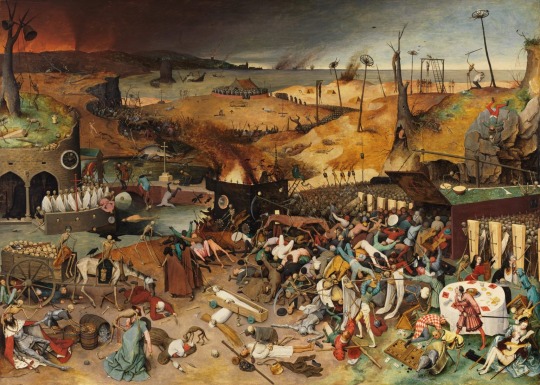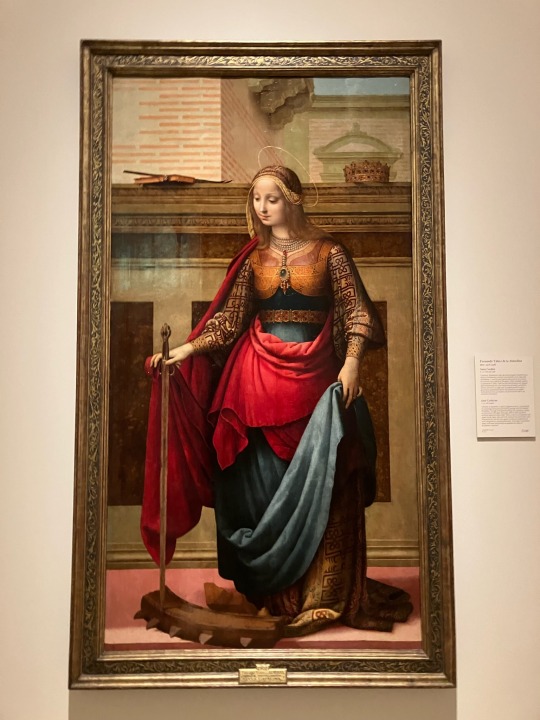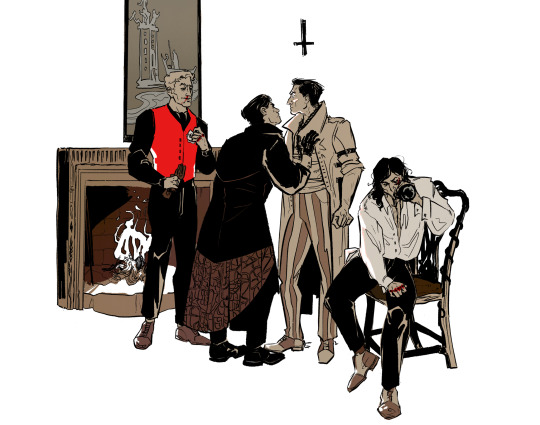#the triumph of death
Explore tagged Tumblr posts
Text




Albín Brunovský (1935–1997)
Triumf smrti (The Triumph of Death), 1975
source
#albín brunovský#triumf smrti#the triumph of death#allegory#symbolism#dark surrealism#surrealism#dark art#horror art#contemporary art#art#illustration#etching
510 notes
·
View notes
Text
todays miku is a herald of the triumph of Death


Inspired by the painting "The Triumph of Death" by Pieter Bruegel thats used in the cover of my favourite miku song ever by Yanagamiyuki~
Herald of Death Miku
MikuMonth 18/30
#anime art#artists on tumblr#drawing#illustration#fanart#vocaloid miku#miku#miku fanart#miku hatsune#hatsune miku#vocaloid fanart#yanagamiyuki#cyber kawaii kunai girl#the triumph of death#original miku#miku design#mikumonth
38 notes
·
View notes
Text

The Triumph of Death (1562) | Pieter Bruegel the Elder
153 notes
·
View notes
Text

170 notes
·
View notes
Text

2 notes
·
View notes
Text




prado today. managed to capture a few sneaky snapshots before the attendants told me off (three separate times in three separate halls. if at first you don’t succeed etc)

look at these fuckin beastes lmao
#the garden of earthly delights#prado museum#madrid#jamie in spain#jamie.txt#art history#hieronymus bosch#pieter bruegel#the triumph of death
14 notes
·
View notes
Text

"The Triumph of Death" by Pieter Bruegel the Elder is a masterful and haunting depiction of the inevitability of mortality and the relentless march of death. Created in the mid-16th century during a period marked by widespread disease, famine, and war, the painting reflects the anxieties and uncertainties of the time.
In this landscape, Bruegel presents a vivid panorama of death's conquest over humanity. The foreground is dominated by a horde of skeletal figures, personifications of Death, wielding scythes and wreaking havoc upon the living. Bodies lie strewn across the ground, while others are herded into mass graves. The scene is one of chaos and despair, with no refuge or escape from death's grasp.
Bruegel's meticulous attention to detail adds to the painting's impact, with each corner of the canvas teeming with scenes of destruction and suffering. From the crumbling castles and burning villages to the skeletal figures engaged in macabre activities, every element serves to reinforce the overarching theme of mortality and the fragility of human life.
Despite the grim subject matter, "The Triumph of Death" also contains elements of dark humor and irony. In the midst of the chaos, Bruegel includes scenes of everyday life continuing as if oblivious to the carnage around them. Figures engage in futile attempts to ward off death or seek refuge in vain, highlighting the absurdity of human existence in the face of mortality.
The painting's message is clear: death is an inevitable part of the human experience, and no one can escape its grasp. Yet, amidst the darkness, there is also a reminder of the resilience of the human spirit and the enduring power of art to confront and explore life's greatest mysteries.
As we gaze upon Bruegel's "The Triumph of Death," we are confronted with the stark realities of mortality and the timeless questions it poses to humanity. It serves as a poignant reminder of the impermanence of life and the need to confront our mortality with courage and acceptance.
In our exploration of art, culture, and the unknown, "The Triumph of Death" stands as a powerful testament to the enduring relevance of art in grappling with life's most profound mysteries. It challenges us to confront our fears, contemplate the meaning of existence, and find solace in the beauty and complexity of the human experience.
#the mystic gallery#art#art history#artistic interpretation#artistic tradition#artistic journey#symbolism#Pieter Bruegel the Elder#The Triumph of Death
7 notes
·
View notes
Text

The activities of the Venetian residents in Constantinople could be watched and to some extent controlled. The Genoese colony of Galata across the Golden Horn was an autonomous enclave beyond the control of the emperor and his officials, setting its own tariffs and collecting its own dues. In 1348 it was estimated that the annual revenue of Galata was nearly seven times that of Constantinople.
When, as a matter of form, the Genoese asked permission to enlarge and refortify their settlement the emperor refused. They took no notice and did as they wished.
The Venetians were jealous. They had never acquired the kind of independent status which the Genoese enjoyed at Galata. Before they could take any action, however, a catastrophe of global dimensions struck the just and the unjust alike.
In 1346 Bubonic Plague, known as the Black Death, swept the world from east to west. This too had its origins in the Crimea.
Tradition links it with the Tatar siege of Caffa in 1346. From there the plague was carried by the rats on Italian ships. It reached Constantinople and then Trebizond in the summer of 1347. By the end of the year it had reached Marseille; and by March 1348 it had spread to Venice.
Demographically the Black Death was one of the greatest disasters in human history. Statistics are hard to come by. The fullest and most literary account of its effects in Constantinople and the Byzantine world is that given by the Emperor John Cantacuzene in the memoirs that he wrote later in his long life. His youngest son was a victim. But he gives no figures, no roll-call of the dead; and his description of the symptoms and the suffering is derived sometimes word for word from the celebrated account written by Thucydides of the plague at Athens in the time of Pericles.
His contemporary Gregoras rightly records that the infection was brought to Constantinople from the Scythian or Tatar country of Lake Maiotis or the Sea of Azov.
The Black Death left its survivors, in the east and in the west, in a state of shock, of nervous apprehension that it would return, as it did, though in less virulent form, on several occasions in the next hundred years.
In Constantinople and the few remaining provinces of the Byzantine Empire it came at the end of a civil war which had already made normal life impossible. The treasury was empty; the fields and vineyards in Thrace had been devastated in the fighting, not least by the Turkish troops that both sides had engaged to fight their battles. The capital city was falling into ruins and the money could not be found for its upkeep.
#book#byzantium and venice#bubonic plague#black death#begining of the end of constantinople#rise of the venitian republic#art#the triumph of death#pieter bruegel the elder
2 notes
·
View notes
Text

Sister, can I compete?
#triumph = conquest#I still wish they translated makima as devil of conquest#but she gets a fun silly unique name compared to the other horseman sisters I suppose haha#Makima#makima fanart#death chainsaw man#chainsaw man#csm#horseman sisters#artists on tumblr#comic
373 notes
·
View notes
Text

Bridge across the Styx
#referenced Love Will Triumph by charles haigh-wood#and for the painting#ancient carvings on coins depicting the lost pharos of alexandria#but like with a charon vibe (them vs death)#pathologic#pathologic fanart#daniil dankovsky#andrey stamatin#peter stamatin#farkhad
724 notes
·
View notes
Text

103 notes
·
View notes
Text

#THE TRIUMPH OF DEATH#pieter bruegel the elder#painting#meditation#poetry#supernatural#philosophy#mysticism#transcendence#horror#essay
4 notes
·
View notes
Note
In your post game timeline, do you think the rest of class 77 get envious of the survivors’ tight knit bond?
Not really envious per se, knowing what it came with, but I think they probably notice and maybe get annoyed by it once in a while
(Except yeah everyone is jealous they're not as close to Hajime, even the people closest to him get jealous when they don't perceive it that way. The only people who don't are Nagito (doesn't think he deserves genuine connection yadda yadda) and Chiaki (always thinks of him as her fountain bench boy, doesn't want anything else))
#not an art#I think of the survivors like the OG one piece crew (east blue crew??? Idr)#It was just a really different time yknow. Trials and triumphs#Aw :( I wish I had been there when they .... almost starved to death.....well maybe not#I think maybe they'd be a little concerned by it lol.... like hey I know I died in the 3rd trial and I missed out#But wow you 5 seriously can't be separated huh! That's a little unhealthy!
79 notes
·
View notes
Text
my turn to do discourse! yay! anyway i think the jedi whose return they named an entire movie after is anakin skywalker
#considering the central question of the movie is whether he still exists or if he's been so consumed by hate that he's gone forever#and the big triumph of the movie is him abandoning the vader thing and saying “yes i do still exist”#i would argue that destroying the second death star is presented as like an afterthought triumph compared to this#yes luke does go several places in this movie but i don't think they named the whole thing for the “look who's back from dagobah” moment#and if it's about The Jedi as a collective group they forgot to have any of the characters at all show any sign of that#at the end it's just luke and some ghosts and no one is saying anything about rebuilding the order. the whole focus is on anakin being back#anakin skywalker#darth vader
71 notes
·
View notes
Text


lamb
#solid snake#metal gear solid#mgs#snavid#mgs2#it’s normal to play a game then draw a guy like a lamb on easter sunday the flag signifying triumph over death
89 notes
·
View notes
Text
DEATH HAS ARROWS
by Daniele Valeriani

#tentacles#fhtagn#daniele valeriani#triumph of death#cover art#skull#arrows#death metal#creature#horror#monster#engraving#demon#fhtagnnn
322 notes
·
View notes